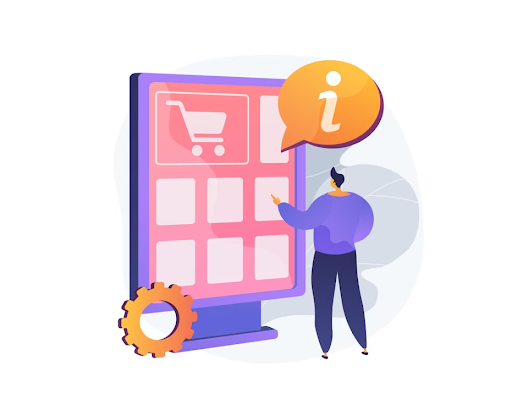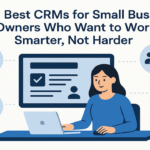Running an online store can be an exciting and rewarding venture, but it can also be costly. From web hosting fees to inventory expenses, the costs can add up quickly. However, there are ways to save money while still maintaining a successful online presence. In this article, we will explore some tips on how to save money while running an online store.
Choose the Right E-commerce Platform
When it comes to choosing an e-commerce platform, the cost is a major factor to consider. Some platforms charge a monthly fee, while others take a percentage of each sale. For example, Shopify charges a monthly fee that starts at $29, while Etsy takes a 5% transaction fee plus a listing fee of $0.20 per item.
To choose the right e-commerce platform, you should first consider your budget and the features you need. For instance, if you’re just starting out with a small online store, you may want to go with a platform that charges a flat monthly fee.
However, if you have a large online store with a high volume of sales, a platform that takes a percentage of each sale may be more cost-effective in the long run. It’s also important to consider the additional costs associated with each platform, such as payment processing fees, transaction fees, and app fees. These costs can add up quickly, so make sure to factor them into your decision-making process. Overall, choosing the right e-commerce platform can save you money and help you grow your online store in a sustainable way.
Use an LTV (Lifetime Value) Calculator
This tool can help you determine the value of each customer over their lifetime. This can help you make informed decisions about how much you should spend on customer acquisition and retention. By understanding your customers’ lifetime value, you can allocate your marketing budget more effectively and focus on strategies that are most likely to bring in long-term customers.
For example, if you sell subscription-based products, an LTV calculator can help you determine the average length of a subscription and the total revenue you can expect from each customer. This information can help you optimize your pricing strategy and retention efforts, ultimately leading to higher profitability and lower customer acquisition costs.
Buy in Bulk
If you sell physical products through your online store, buying in bulk can help you save money on inventory expenses. Many suppliers offer discounts for bulk purchases, so take advantage of these deals whenever possible.
For example, if you sell t-shirts, you might be able to negotiate a lower price per unit by purchasing a large quantity from your supplier. While the upfront cost may be higher, the cost per unit will be lower, which can lead to higher profit margins and cost savings over time. When buying in bulk, it’s important to consider your inventory needs and storage space. You don’t want to buy more inventory than you can sell, as this can lead to excess inventory and wasted money. On the other hand, you also don’t want to run out of stock and miss out on sales opportunities.
Outsource Tasks
By outsourcing, you can access specialized expertise and resources without having to hire a full-time team. When outsourcing tasks, it’s important to choose reliable and reputable freelancers or agencies. Look for reviews and testimonials from past clients, and consider conducting interviews to ensure that the service provider is a good fit for your needs and budget. Outsourcing can also help you save money on overhead costs, such as office space and equipment. Rather than investing in expensive equipment and software, you can rely on your service provider to provide the necessary tools and resources.
For example, if you need a new website design, outsourcing to a web design agency can save you time and money compared to hiring an in-house team. The agency will have the expertise and resources to create a professional website that meets your specific needs and budget.
Negotiate with Vendors
Don’t be afraid to ask for discounts or bulk pricing to get the best possible deals. To negotiate effectively, it’s important to do your research and understand the market. Research the prices of similar products from other suppliers, and use this information to negotiate a better deal. Be prepared to explain why you deserve a discount, such as the volume of your purchases or your long-term business relationship. It’s also important to build a strong relationship with your vendors or suppliers. Establishing good communication and trust can make it easier to negotiate deals and ensure that you receive high-quality products and services.
For example, if you sell handmade jewelry and work with a supplier for your materials, you might be able to negotiate a lower price per unit by ordering a larger quantity or by building a long-term relationship with your supplier.
Optimize your Website for Speed
A slow website can drive away potential customers and hurt your search engine rankings. Optimize your website for speed to improve user experience and reduce the risk of losing sales.
Monitor your expenses Regularly monitoring your expenses can help you identify areas where you can save money. Keep track of your expenses and look for ways to cut costs wherever possible.
Conclusion
Running an online store can be a rewarding venture, but it can also be costly. However, by implementing the tips discussed in this article, you can save money while still maintaining a successful online presence.
First, choose an e-commerce platform that fits your budget and offers the features you need. Utilize free or low-cost marketing strategies, such as social media, email marketing, and content marketing, to promote your online store. Use an LTV Calculator to help you understand the lifetime value of your customers and how much you can spend on marketing.
Consider buying in bulk to save money on inventory expenses, and outsource tasks such as website design or content creation to professionals to save time and money. Finally, don’t be afraid to negotiate prices with your vendors or suppliers. By implementing these tips, you can reduce your costs and increase your profits, ultimately helping your online store to thrive.













